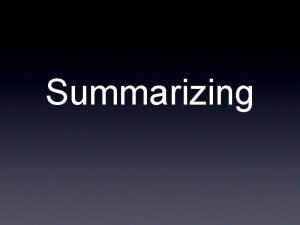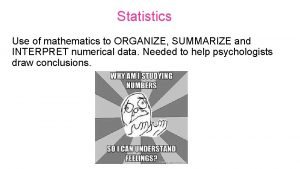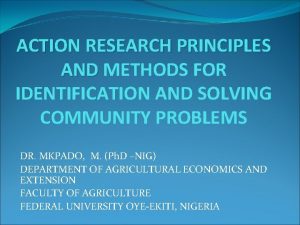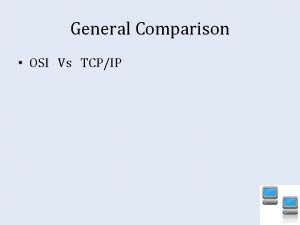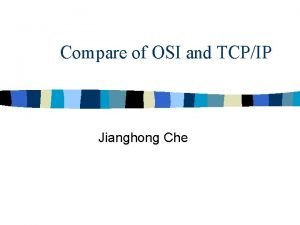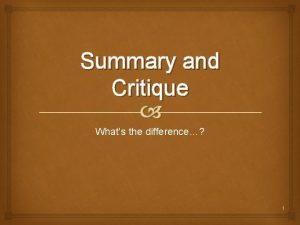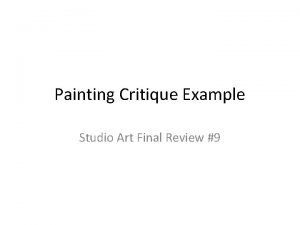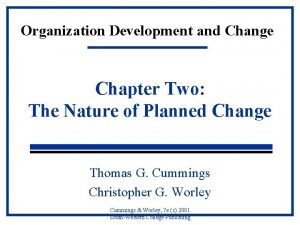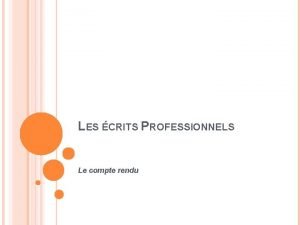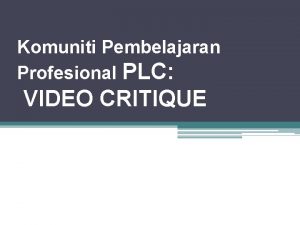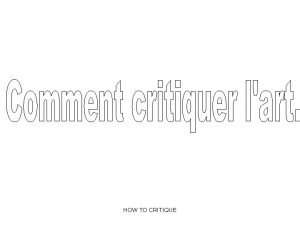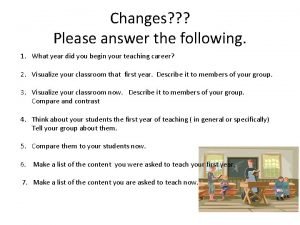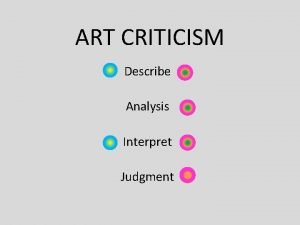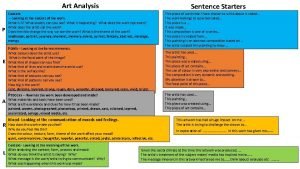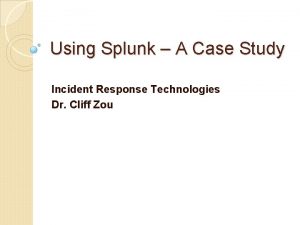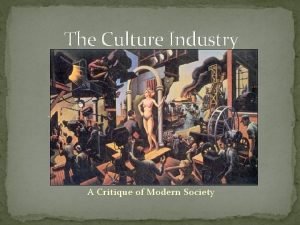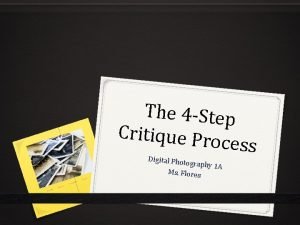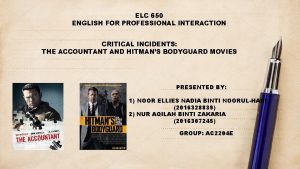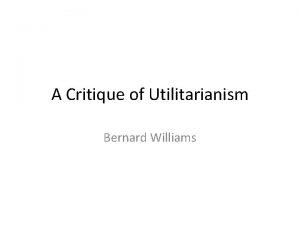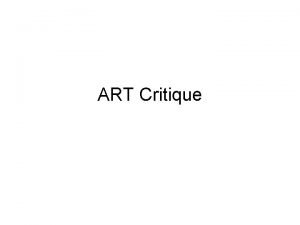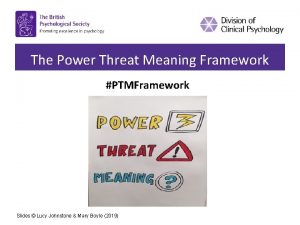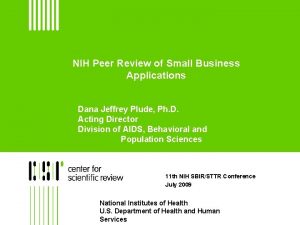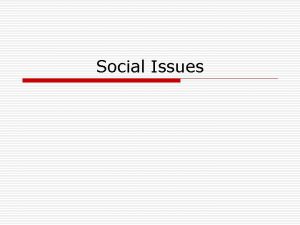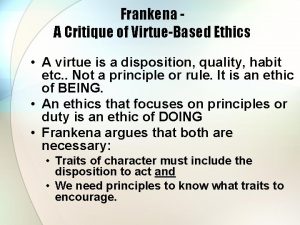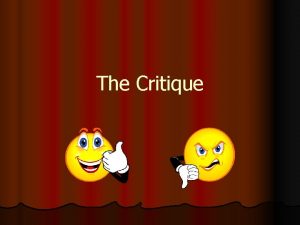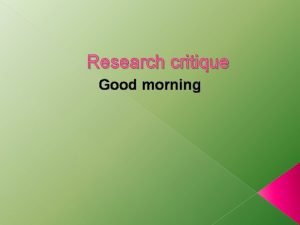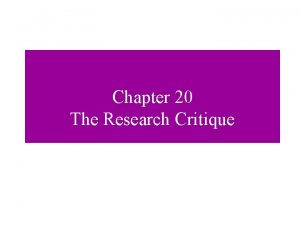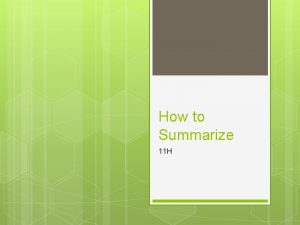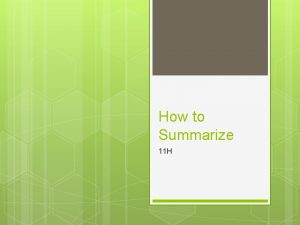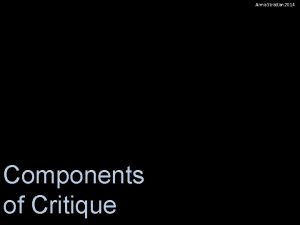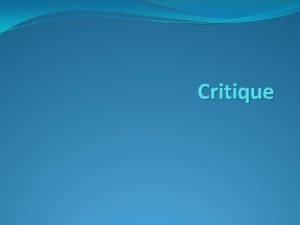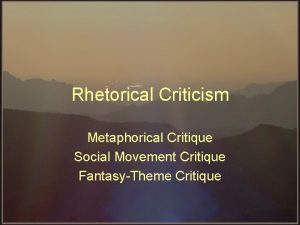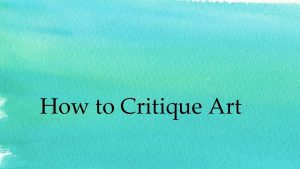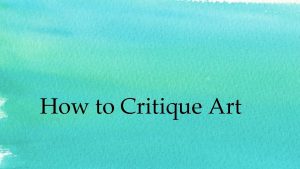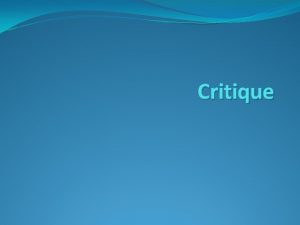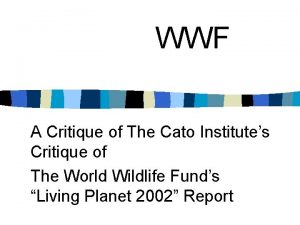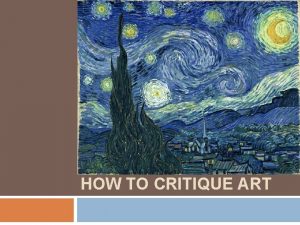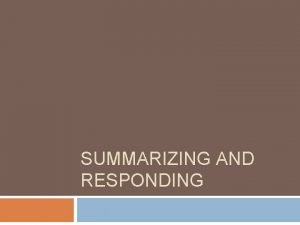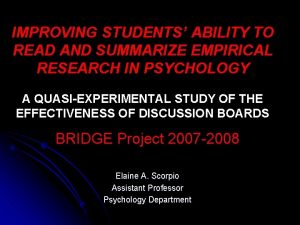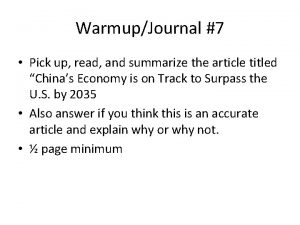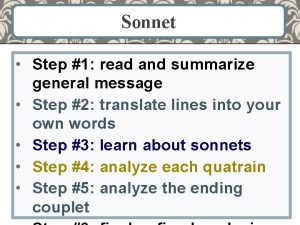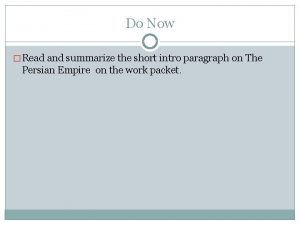How to read summarize and critique a research



























- Slides: 27

How to read, summarize, and critique a research article Caleb Kibet; Lyndon Zass

Outline ● Session 1: ○ ○ ○ Reading a Scientific Article Summarising a Scientific Article Questions Critiquing a Scientific Article Questions Input from participants / facilitators / trainers ● Session 2: ○ Break out rooms / Discussions (25 minutes) ○ Report back (25 minutes)

Read “We are drowning in information but starved for knowledge. ” John Naisbitt

1. Decide why you want to Read the paper These could be: 1. to review paper for a conference or a class, 2. to keep current in the field 3. for a literature survey of a new field The purpose for reading, should guide how you read, and to what depth.

What are some other reasons for reading an article?

2. Choose and read the right articles Subramanyam, R. V. (2013). Art of reading a journal article: Methodically and effectively. Journal of Oral and Maxillofacial Pathology, 17(1), 65– 70. https: //doi. org/10. 4103/0973 -029 X. 110733

3. Choose a reading approach (How) THE THREE-PASS APPROACH: ideal for reading an entire paper in depth. 1. The first pass gives you a general idea about the paper. 2. The second pass lets you grasp the paper’s content, but not its details. 3. The third pass helps you understand the paper in depth. Keshav, S. (2007). How to read a paper. In Computer Communication Review (Vol. 37, Issue 3, pp. 83– 84). https: //doi. org/10. 1145/1273445. 1273458

How to READ a Scientific Paper

First Pass https: //www. elsevier. com/connect/infographic-how-to-read-a-scientific-paper

Second Pass

Third Pass

Summarize

How to Summarize Before you draft a summary: ● Try to describe the article in your own words first. ● Try to distill the article down to its “scientific essence. ” ● Include all the key points and be accurate. ● A reader who has not read the original article should be able to understand your summary

To write a summary Ask yourself: ● What is the purpose of the study? ● What questions were asked? ● How did the study address these questions? ● What assumptions did the author make? ● What were the major findings? ● What surprised you or struck you as interesting? ● What questions are still unanswered?

In the next session, we’ll summarise the assigned article using the points above.


Critique ● What does it mean to critique an article? ○ ○ Critically read a research article and reflect upon it. Identify the strong and weak sides of the piece. Assess how well the author interprets its sources. Reflect upon the validity and effectiveness of the arguments. ● Prerequisites ○ Critical thinking is key. ○ Must be able to distinguish solid arguments from weak ones. ● Knowledge ● POV

Critique - Why? ● Important skill for researchers ■ ■ Allows you to learn from others Improve your own research Avoid protocol pitfalls Collate and distinguish between similar studies ● Important skill for reviewers ■ Critically evaluate published papers ■ Ensure published papers are of a specific standard.

Critique - Main Steps ● ● Step 1. Read the Article Step 2. Collect Proof Step 3. Formatting Your Paper Step 4. Write-up Critique

Critique - Main Steps ● Step 1. Read the Article ■ Read carefully & thoroughly ■ Ensure that you fully understand all the information. ■ Consider the following questions: ● Why is the article’s author considered an expert in their field? ● What is the author’s thesis/hypothesis? ● Who is the article’s target audience? ● Are the arguments presented valid? ● What are the logical fallacies in the author’s viewpoint? ● Is the conclusion clear and logical?

Critique - Main Steps ● Step 2. Collect Proof ■ Article Following Formal Logic / Identify Logical Fallacies ○ Correlation vs. Causation ○ Wishful Thinking ■ Search for Any Biased Opinions in the Article ○ Evaluate the Language Used in the Article ■ Pay Attention to the Way the Author Interprets Others’ Texts. ○ Check Cited Sources ■ Question the Research Methods ○ How is the design of the study? Are there any errors in it? ○ Was there a control group used for this research? ○ Were there any sample size issues? ○ Were there any statistical errors? ○ Does the research offer any real impact / value in its field?

Critique - Main Steps ● Step 3. Formatting Your Critique Paper ■ Various ways to format paper ■ Template and example available here ■ Key structural considerations ○ Background ○ Introduction ○ Methods ○ Results ○ Discussion

Step 4. Write-up Critique

Step 4. Write-up Critique

Step 4. Write-up Critique

Key Takeaways ● Reading, summarising and critiquing articles are crucial skills for every scientist. ● Everyone does it a little bit differently ■ Consider points highlighted ■ Guidelines for implementation of skills ■ Enable personal and skill development

 Summarize and restate information
Summarize and restate information The use of mathematics to organize summarize
The use of mathematics to organize summarize Action research principles
Action research principles Osi vs tcp ip
Osi vs tcp ip Comparison and critique of osi and tcp/ip model
Comparison and critique of osi and tcp/ip model Whats a summary
Whats a summary Kant third critique
Kant third critique Critique
Critique Painting review example
Painting review example Critique of planned change
Critique of planned change Compte rendu informatif
Compte rendu informatif Plc video critique
Plc video critique Steps of art criticism
Steps of art criticism Art critique questions
Art critique questions Art judgement example
Art judgement example Analyze sentence starters
Analyze sentence starters Incident response case study
Incident response case study Culture industry definition
Culture industry definition 4 step critique process
4 step critique process Elc 650 small talk
Elc 650 small talk Bernard williams integrity
Bernard williams integrity Art critique sentence starters
Art critique sentence starters Art critique process
Art critique process Lucy johnstone power threat meaning framework
Lucy johnstone power threat meaning framework Nih critique template
Nih critique template Social critique meaning
Social critique meaning Genre magical realism
Genre magical realism William frankena ethics summary
William frankena ethics summary
